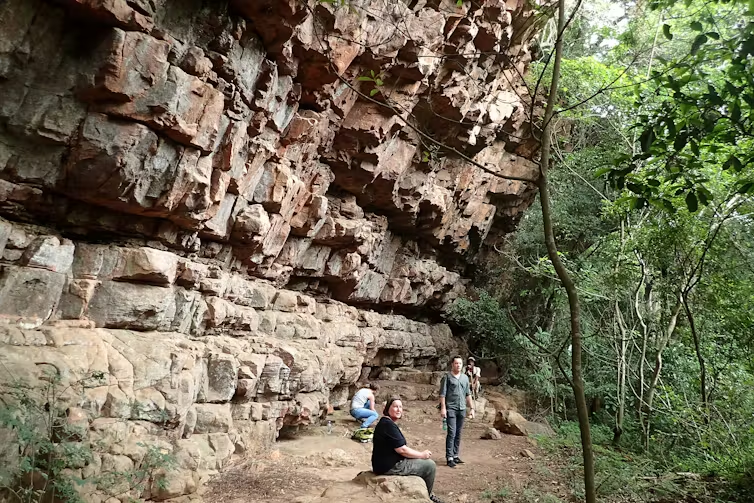The mysteries of an ancient monster are hidden on the Qinghai-Xizang Plateau, sometimes known as the "Roof of the World."
Himalayasaurus fossils and a restoration diagram /Institute of Vertebrate Paleontology and Paleoanthropology, Chinese Academy of Sciences
Chinese paleontologists first discovered ichthyosaur fossils on the Qinghai-Xizang Plateau more than 50 years ago while conducting research missions there. However, the international paleontological community has continued to be dubious regarding the existence of this ichthyosaur, known as "Himalayasaurus," due to the fossils being scattered bones and inadequate preservation brought on by the restrictions of the time and environment.
After years of work, researchers announced in May of this year that they had once again discovered and verified Himalayasaurus fossils from the Triassic period (roughly 252 to 201 million years ago), building on the foundation established by the previous generation of scientists conducting fieldwork on the Qinghai-Xizang Plateau.
These discoveries have major ramifications for understanding the ancient habitat of the Tethys Ocean and the environmental changes that occurred on the Qinghai-Xizang Plateau over 200 million years ago, as well as for improving and enriching the evolutionary history of life based on Chinese fossil materials.
What type of animal is an ichthyosaur? The ichthyosaur was an ancient aquatic reptile that existed in the Mesozoic oceans, according to the Qinghai-Xizang Plateau expedition team from the Institute of Vertebrate Paleontology and Paleoanthropology (IVPP) of the Chinese Academy of Sciences. Its look is many million years older than that of dinosaurs. They evolved into enormous bodies that were over 10 meters in length after evolving in the waters more than 200 million years ago. Thus, ichthyosaurs are appropriately regarded as the masters of the Mesozoic oceans since they are the earliest large-bodied vertebrates known in the history of existence.
A file photo shows the fragments of ichthyosaur ribs discovered on the coast of an island near Vladivostok in Russia. /CFP
Meanwhile, a group of biology students discovered pieces of ichthyosaur ribs from 230 to 240 million years ago in 2022 on the coast of an island near Vladivostok, Russia.
"Ichthyosaur bones have now been found on Russian islands three times," The two ichthyosaur bone fragments have been sent to the museum, according to a representative of the Primorsky Krai Maritime Museum.
Extinct sea reptiles called ichthyosaurs looked like fish and dolphins. 2014 saw the initial finding of ichthyosaur remains on Russian islands. Another pair of ichthyosaur bones was discovered on the islands in 2020, and it was first estimated that they lived about 247 million years ago.







